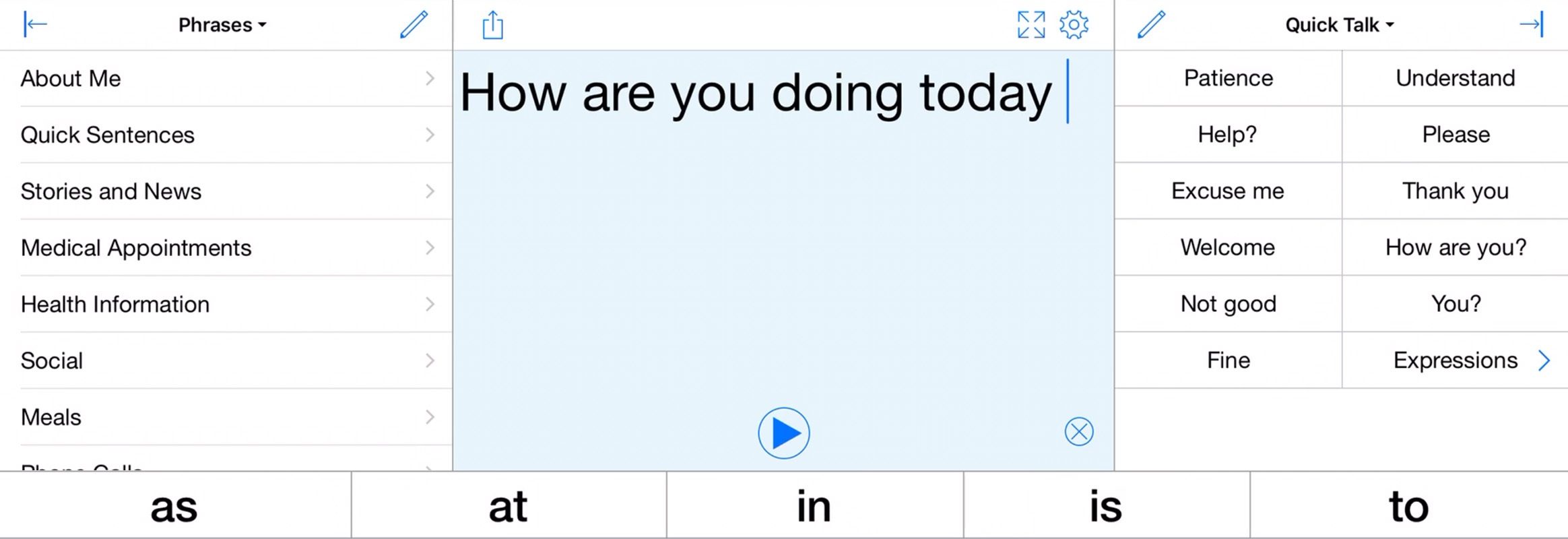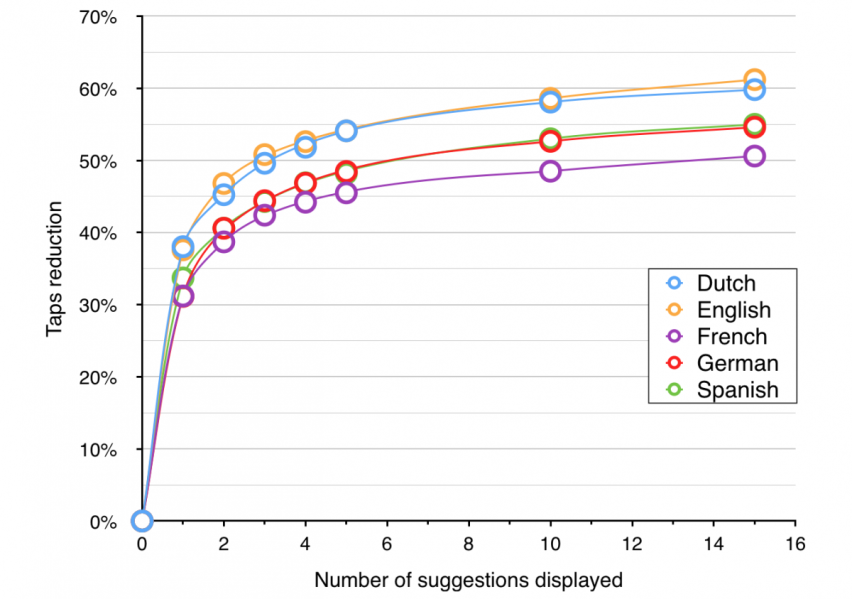The problem
If you rely on an on-screen keyboard to communicate, anything that improves typing speed and reduces effort makes a big difference. Word prediction is one technology that can make such a difference, as long as it takes less effort to locate the right suggestion than it takes to type the next character. A word prediction system needs to feel as if it is reading your mind. This was the objective we had while developing our PolyPredix word prediction engine for our AAC apps. You can find PolyPredix in Proloquo2Go, Proloquo4Text, simPODD, Keeble, and Keedogo Plus.
Types of word prediction
Linguistic rules or statistics
There are two basic types of word prediction: systems based on linguistic rules and systems based on statistics. Linguistic prediction systems have the benefit and drawback that they guide the user into writing certain types of sentences. Statistical prediction systems allow the user more freedom in writing style but do not guarantee grammatically correct sentences. For PolyPredix, we chose the statistical approach so that we could combine great prediction with support for many different languages.
Prediction power
In the world of word prediction, there are three different methods for predicting words: word completion, next-word prediction and multi-word prediction. Word completion systems suggest an ending to the word currently being typed but are unable to suggest the most likely next word. Next-word prediction systems combine word completion with the ability to suggest the next word after a space is typed. The most advanced method is multi-word prediction, which builds upon word completion and next word prediction by including multi-word suggestions, such as "want to" after the user has typed "I wa". PolyPredix is such a multi-word prediction system.







